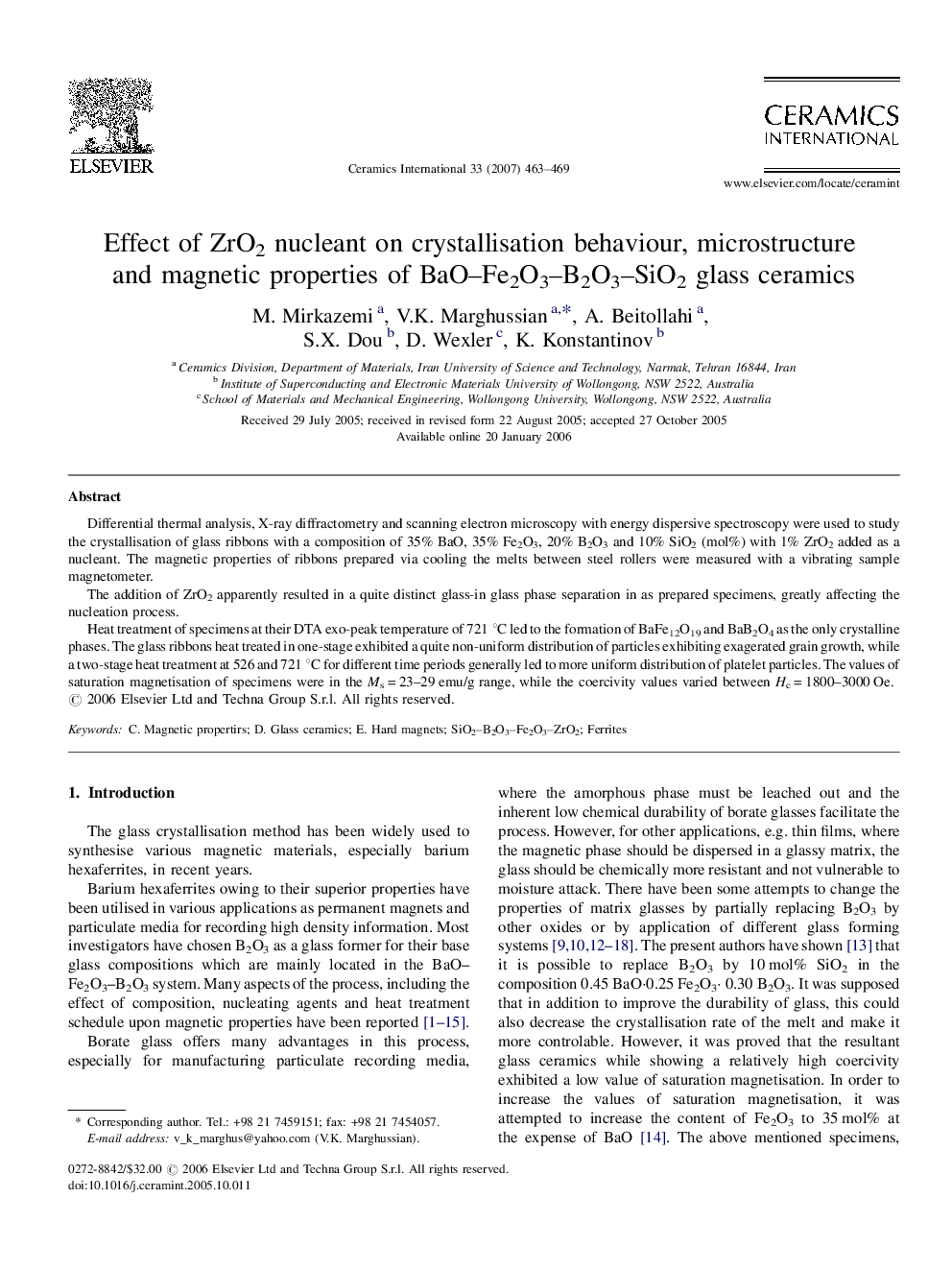| Article ID | Journal | Published Year | Pages | File Type |
|---|---|---|---|---|
| 1464941 | Ceramics International | 2007 | 7 Pages |
Differential thermal analysis, X-ray diffractometry and scanning electron microscopy with energy dispersive spectroscopy were used to study the crystallisation of glass ribbons with a composition of 35% BaO, 35% Fe2O3, 20% B2O3 and 10% SiO2 (mol%) with 1% ZrO2 added as a nucleant. The magnetic properties of ribbons prepared via cooling the melts between steel rollers were measured with a vibrating sample magnetometer.The addition of ZrO2 apparently resulted in a quite distinct glass-in glass phase separation in as prepared specimens, greatly affecting the nucleation process.Heat treatment of specimens at their DTA exo-peak temperature of 721 °C led to the formation of BaFe12O19 and BaB2O4 as the only crystalline phases. The glass ribbons heat treated in one-stage exhibited a quite non-uniform distribution of particles exhibiting exagerated grain growth, while a two-stage heat treatment at 526 and 721 °C for different time periods generally led to more uniform distribution of platelet particles. The values of saturation magnetisation of specimens were in the Ms = 23–29 emu/g range, while the coercivity values varied between Hc = 1800–3000 Oe.
